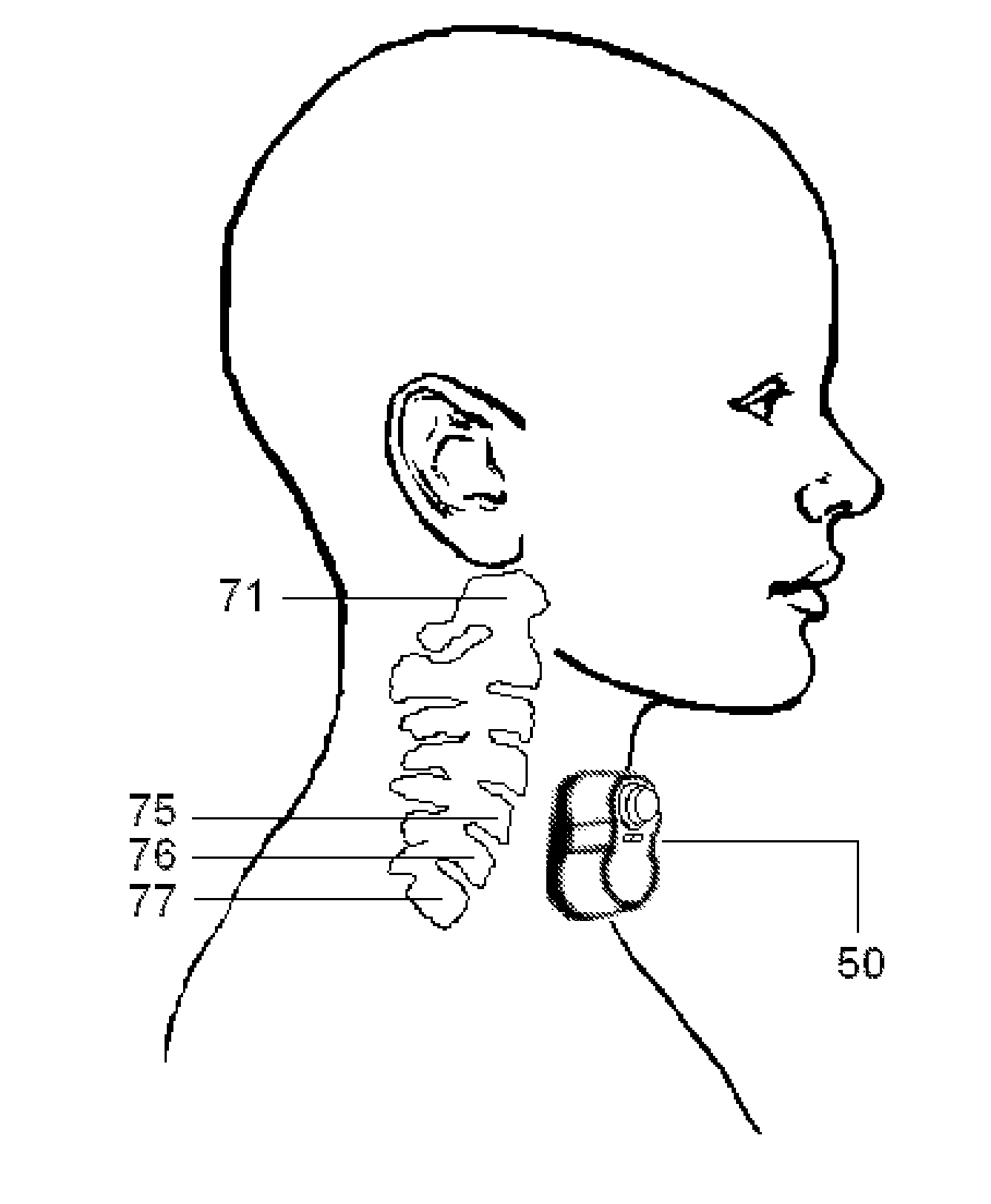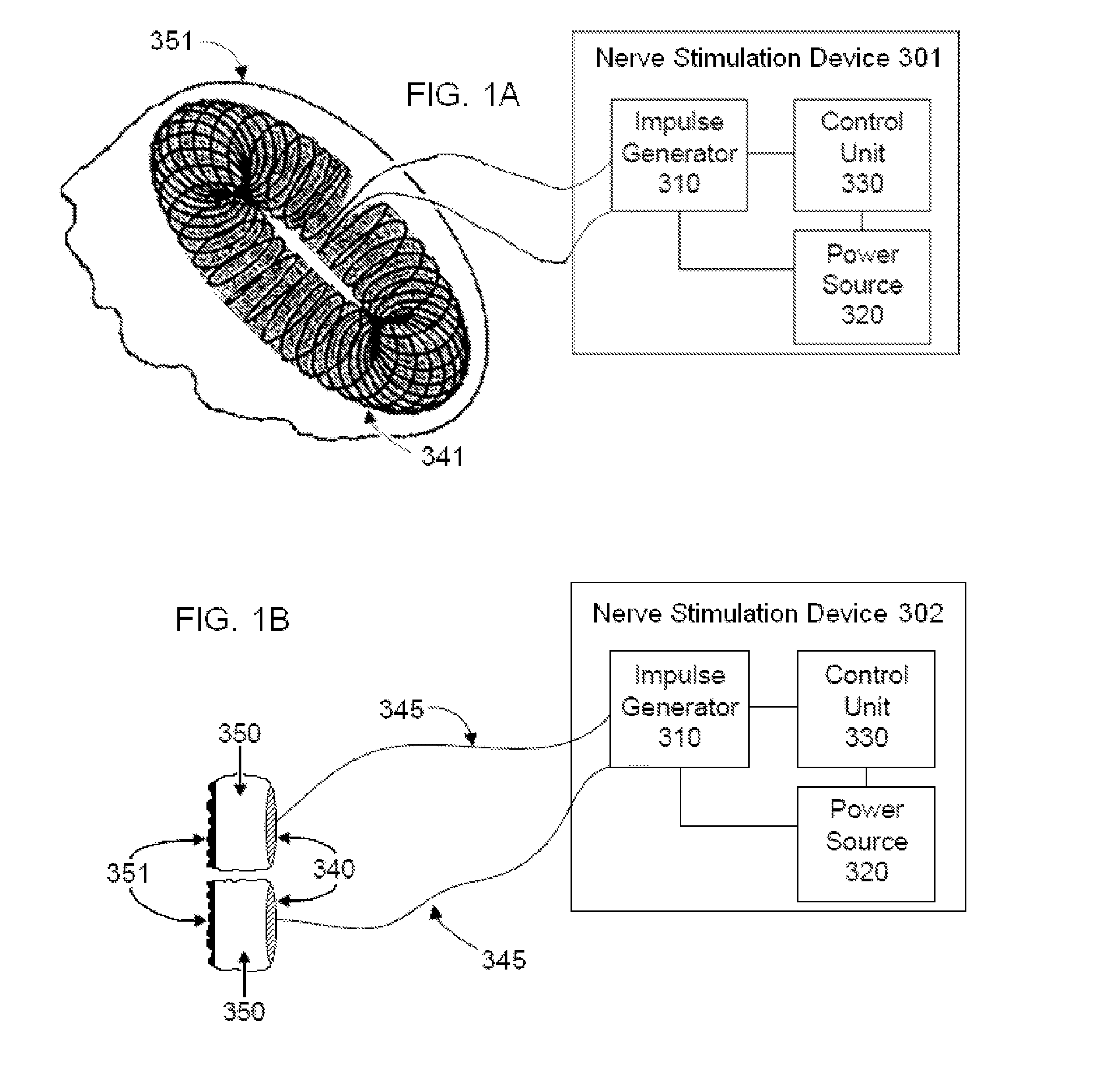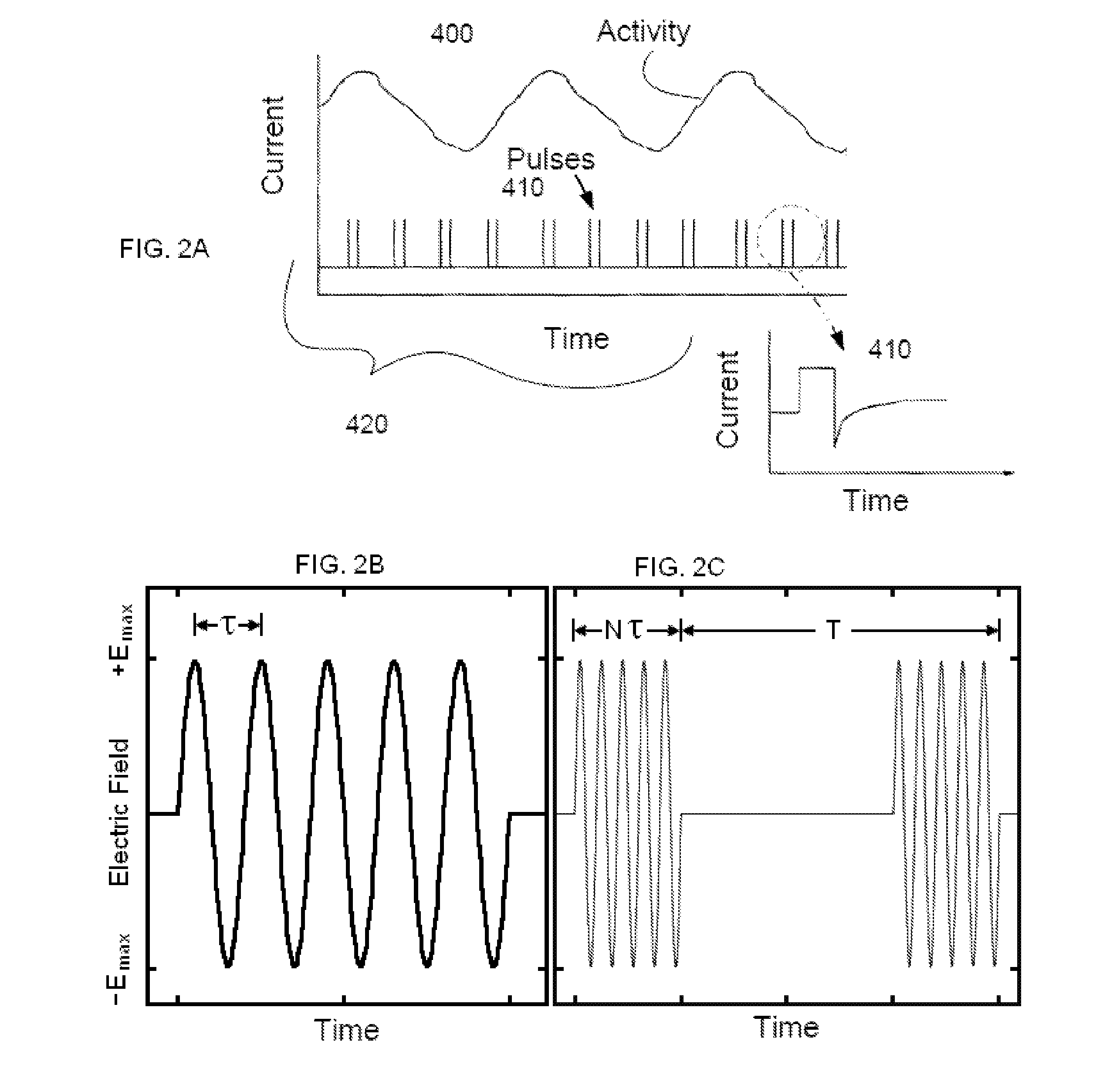Non-invasive vagus nerve stimulation devices and methods to treat or avert atrial fibrillation
a vagus nerve and non-invasive technology, applied in the field of delivery of energy impulses, can solve the problems of unintentional nerve stimulation, high cost, complex electrical circuit of magnetic stimulators,
- Summary
- Abstract
- Description
- Claims
- Application Information
AI Technical Summary
Benefits of technology
Problems solved by technology
Method used
Image
Examples
Embodiment Construction
[0062]In the present invention, energy is transmitted non-invasively to a patient using novel electrode-based and / or magnetic stimulation devices that are designed to meet a long-felt but unsolved need to stimulate nerves electrically, totally non-invasively, selectively, and essentially without producing pain. The invention is also designed to produce electrical impulses that interact with the signals of one or more target nerves to achieve a therapeutic result. In particular, the devices and methods are intended to stimulate a vagus nerve non-invasively at a location in a patient's neck, in order to treat atrial fibrillation, or to detect and avert the onset of an imminent episode of atrial fibrillation.
[0063]Atrial fibrillation (AF) is a cardiac rhythm disturbance in which the duration of successive heartbeats (ventricular contractions of the heart) is apparently random or “irregularly irregular”. In most cases, low-amplitude oscillations (f-waves due to fibrillatory quivering of...
PUM
 Login to View More
Login to View More Abstract
Description
Claims
Application Information
 Login to View More
Login to View More - R&D
- Intellectual Property
- Life Sciences
- Materials
- Tech Scout
- Unparalleled Data Quality
- Higher Quality Content
- 60% Fewer Hallucinations
Browse by: Latest US Patents, China's latest patents, Technical Efficacy Thesaurus, Application Domain, Technology Topic, Popular Technical Reports.
© 2025 PatSnap. All rights reserved.Legal|Privacy policy|Modern Slavery Act Transparency Statement|Sitemap|About US| Contact US: help@patsnap.com



